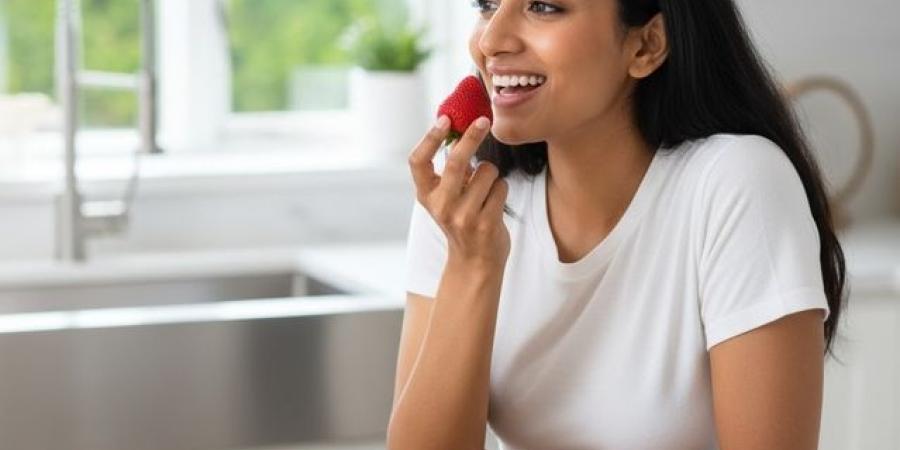نعرض لكم زوارنا أهم وأحدث الأخبار فى المقال الاتي:
5 Tips for Cleaning Fruits the Best Way Before Eating Them - المصدر 7, اليوم الجمعة 14 نوفمبر 2025 01:36 مساءً
المصدر 7 - Washing your fruits properly is one of the simplest and most important habits for protecting your health. Even the freshest-looking fruit can carry dirt, pesticides, wax, bacteria, and invisible contaminants from farms, shipping trucks, storage areas, and supermarket shelves.
A quick rinse under running water isn"t enough — and in some cases, it does almost nothing. To safely enjoy your fruit and get maximum flavor and nutrition, you need to clean it the right way.
Here are five effective, science-backed tips to clean your fruits thoroughly before eating them.
1. Use Running Water — The Only Essential Step You Should Never Skip
The simplest method is often the most effective.
Washing fruit under clean, running water removes a significant amount of:
dirt
dust
bacteria
pesticide residue
bacteria transferred from handling
How to wash correctly:
Use cool or lukewarm water (never hot).
Rub the fruit gently with your hands.
For fruits with firm skin, scrub lightly with a soft brush.
Why running water works:
Friction + water helps lift contaminants from the surface without damaging the fruit.
Never do this:
Don’t wash fruit with soap.
Don’t use dishwashing liquid.
Don’t use bleach or cleaning agents.
These chemicals are unsafe to consume and can seep into the fruit’s skin.
Pro tip:
Wash fruits right before eating, not before storing, to avoid moisture buildup that causes mold.
2. Use a Vinegar Solution to Remove Pesticides and Bacteria
Vinegar is one of the best natural cleaners for fruits.
Research shows that a vinegar rinse can remove more pesticides and kill more bacteria than water alone.
How to prepare the solution:
Mix 1 cup of white vinegar with 3 cups of water.
Soak fruits for 10–15 minutes.
Rinse with clean water afterward.
Best fruits for vinegar washing:
Apples
Grapes
Berries
Pears
Peaches
Plums
Why vinegar works:
Vinegar breaks down wax, pesticide residue, and microbial contaminants.
It’s especially effective on fruits handled frequently by multiple people.
Pro tip:
Use a large bowl for soaking — never soak fruits in a sink unless it’s freshly disinfected.
3. Use Baking Soda for Wax-Coated or Tough-Skinned Fruits
Many supermarket fruits are coated with wax to make them shiny and extend shelf life.
This wax traps dirt and pesticides underneath, making plain rinsing ineffective.
Baking soda is one of the best natural ways to remove this wax.
How to use baking soda:
Add 1 teaspoon of baking soda to 2 cups of water.
Soak fruit for 10–12 minutes.
Scrub gently with a brush if needed.
Rinse thoroughly afterward.
Best fruits for baking soda:
Apples
Cucumbers
Mangoes
Oranges
Lemons
Avocados
Why baking soda works:
It breaks down the wax layer and lifts contaminants stuck to it.
Pro tip:
If the fruit has deep grooves (like cantaloupe), scrub carefully to reach crevices where bacteria may hide.
4. Peel When Necessary — Especially for High-Pesticide Fruits
Some fruits absorb more pesticides through their skin than others.
In such cases, peeling provides an extra level of protection.
Fruits you may want to peel:
Apples
Peaches
Pears
Nectarines
Mangos
Grapes (optional)
Benefits of peeling:
Removes most pesticide residue
Eliminates wax, dirt, and contaminants
Reduces risk of accidental ingestion of chemicals
But there’s a downside:
Peeling removes fiber and nutrients located in the skin, so use this method only when necessary.
Pro tip:
Even if you plan to peel the fruit, wash it first — to avoid dragging contaminants from the skin onto the edible part.
5. Always Dry Fruits Properly After Washing
Most people wash fruits but forget the final — and important — step: drying.
Moisture can encourage bacterial growth or make fruits spoil faster.
How to dry fruits properly:
Use clean paper towels or a dry kitchen towel.
Gently pat and roll the fruit dry.
Air drying works too, but avoid leaving fruit in humid places.
Why drying matters:
Removes any remaining contaminants
Prevents mold
Enhances flavor and texture (especially with berries and grapes)
Helps fruit last longer in storage
Pro tip:
Store dried fruits in a breathable container — airtight containers can trap moisture and cause spoilage.
???? Bonus: Special Tips for Different Types of Fruits
Berries (fragile fruits):
Don’t soak for long
Rinse gently under cool water
Dry carefully on a towel
Grapes:
Remove from stems before washing
Soak in vinegar solution for best results
Citrus fruits:
Scrub the outer skin before slicing
Even though you don’t eat the peel, contaminants transfer to the inside when cutting
Melons:
Wash thoroughly before slicing — their rough skin hides bacteria
Soft fruits:
Use gentle washing to avoid bruising
Bottom Line
Cleaning your fruit the right way ensures better taste, safety, and nutrition.
By using water, vinegar, baking soda, optional peeling, and proper drying, you remove dirt, wax, bacteria, and chemical residue effectively.
These simple habits make your fruit fresher, safer, and far healthier — and they"re easy to add to your daily routine.
















0 تعليق